Introduction
Is there a more iconic car than the MINI? From its roots in the classic 1960s microcar to the successful 21st century reimagining, it’s become a firm fixture on British roads as a quirky, characterful and fun-to-drive hatchback. This all-electric version that aims to keep all that fun but without any polluting emissions.
At a Glance
Reinventing a classic is always a risky game. Mini aficionados were up in arms when BMW unveiled the revamped and reborn model in 2001, but the new car proved a hit and has gone more or less unchanged since – in style and character, at least.
That means that when Mini announces it’s doing away with the engine, there were sharp intakes of breath. A Mini relies on sharp handling and fun behind the wheel as cornerstones of its appeal. Can it really be as good with an electric motor? Well, the company thinks so, and has released the Mini Electric with a brisk 181bhp powerplant, three trim levels and trademark styling to compete against the likes of the Honda E, Renault Zoe, Nissan Leaf and increasing numbers of small electric cars. It was originally released in 2020, but given a facelift in 2021 with a few visual tweaks and some extra creature comforts.
Key Features
Things you want to know about an electric Mini – how quick is it, how expensive is it, how far can I go on a battery charge? To answer the first question, it’s brisk, with nearly as much power as the petrol-powered Mini Cooper S. More on that below. Price? Pretty similar to a lot of rivals when it comes to monthly leasing costs. A bit pricier than some, a bit less than others.
Range? Up to 145 miles on a single charge, which doesn’t sound much on paper when compared with rivals, but then how often do you do that much driving in one go?
![]()
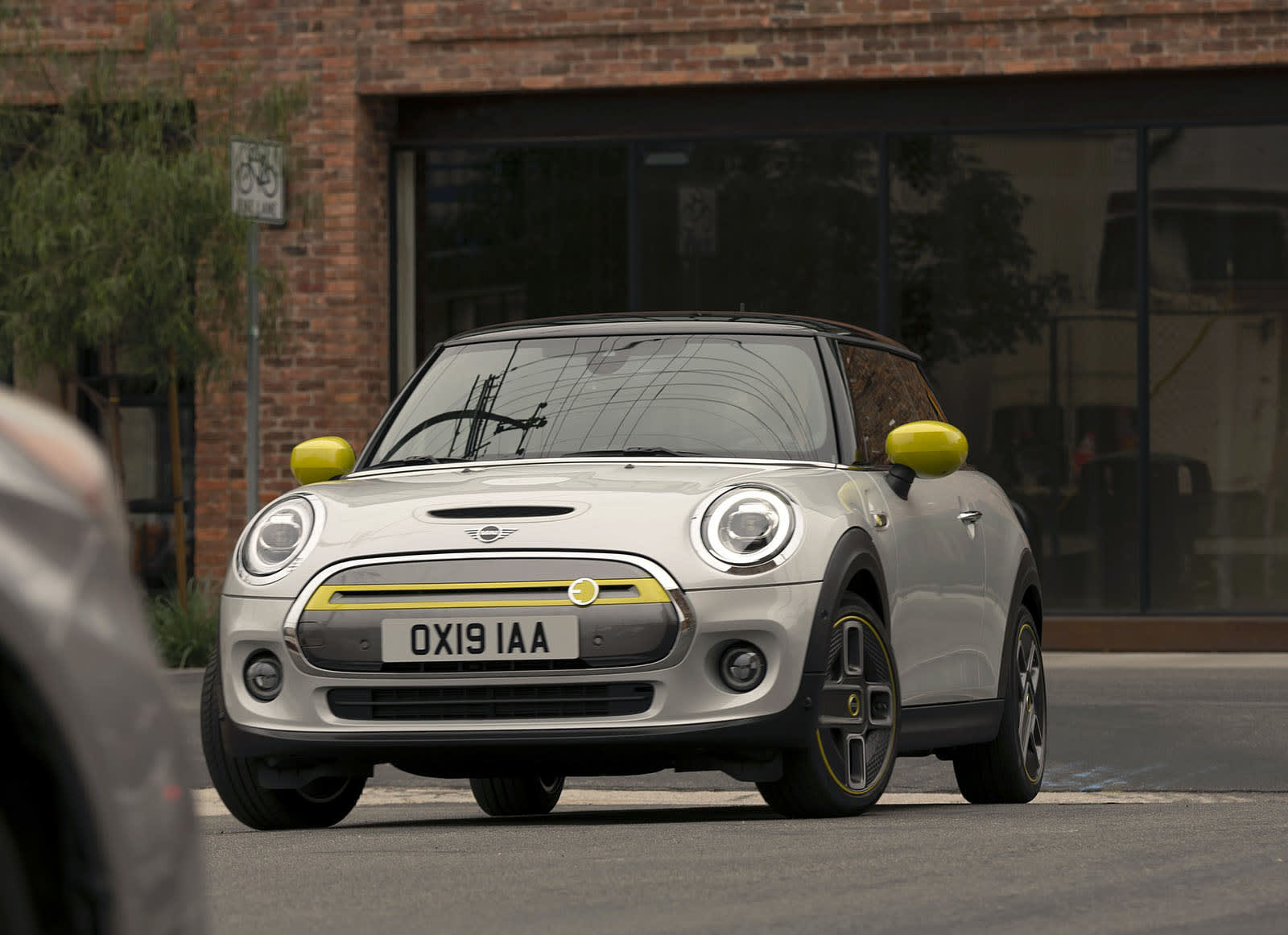
To look at and sit in, you’d be forgiven for not knowing that this was an electric car. It looks like a MINI inside and out, except for bright yellow side mirrors, and has the same visual updates for 2021 as the rest of the MINI range. That means lots of black on the grille and around the headlights, and a deeper grille than before that extends all the way to the bottom of the front bumper. Under the surface lurks the same electric motor that you’d find in the BMW i3S, powering the front wheels. You can switch between different modes to make it more economical on the electricity, or to make it more sporty.
All models get LED lights, alloy wheels and sat-nav, as well as dual-zone air conditioning and a digital display instead of analogue instruments behind the steering wheel. The styling might be retro, but this is a very modern car.
MINI says you’ll get 145 miles to a charge, but in the real world that’s probably closer to 120 miles. If you drive it in a spirited fashion, 100 miles is likely more realistic. That’s considerably lower than a lot of rivals will do, and for some that might be an issue.
For many though, the vast bulk of their journeys will be of less than 100 miles, and as long as you have somewhere to charge it, you may find it’s actually not a problem.
It’s hard to review a Mini without mentioning go-kart-like handling. The dinky hatchback has always been a joy to thread through bends, with light weight, communicative steering and suspension that helps it cling to the road. So you’d be understandably worried that removing the engine and adding an electric motor adds a considerable 145kg to the Mini Electric’s weight.
Surely physics dictates that it can’t handle as well with all that extra bulk?
Well… sort of. If you’re very picky, you could say that it’s not quite as agile as, say, a Mini Cooper S. But it’s not that straightforward. That extra weight is very low in the car, giving it a lower centre of gravity than a petrol version. And the electric motor reacts instantly to the accelerator, giving you a shove in the back when you want power. Make no mistake, this is still a great fun car to drive through a set of corners.
It’s a different experience to the petrol Mini, but it’s definitely playing the same game.
![]()
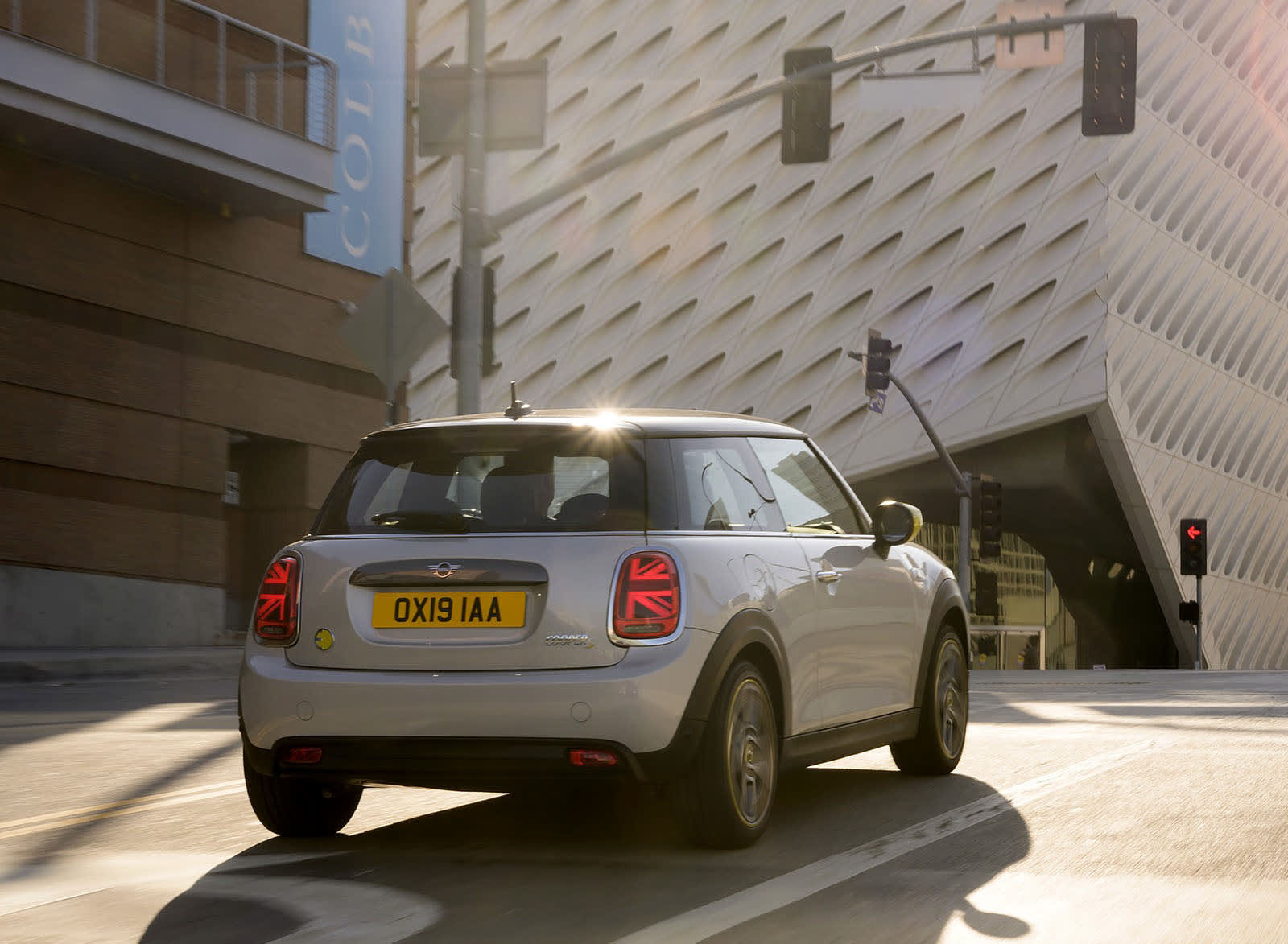
Downsides? Well, the suspension has had to beef up to cope with the extra weight and that does make the ride rather firm, but it’s not a deal-breaker. When you’re not seeking out country roads, it’s perfectly fine as a quiet, stylish runabout around town. Lifting off the accelerator sees it regenerate energy, and you can control how much it does this, to the point where it acts as a brake, meaning you can drive the car with just one pedal.
If you want to maximise your range, select one of the Green modes and it’ll help you eke out extra power by limiting the throttle response and turning down the air-con.
Overall, it feels like a Mini. A futuristic Mini, but a Mini nonetheless.
The MINI Electric comes with an AC home charging cable with a three-pin plug, and an AC Type 2 11kW cable too, for public charging. You can use both AC chargers and DC rapid charger, which have their own cables.
If you install a regular 7kW wall box at home, you can recharge the MINI Electric from empty in around four hours. A 50kW fast charger will boost it to 80% in 36 minutes, and if you use a regular three-pin home socket, it’ll take 12 hours at 2.3kW.
![]()
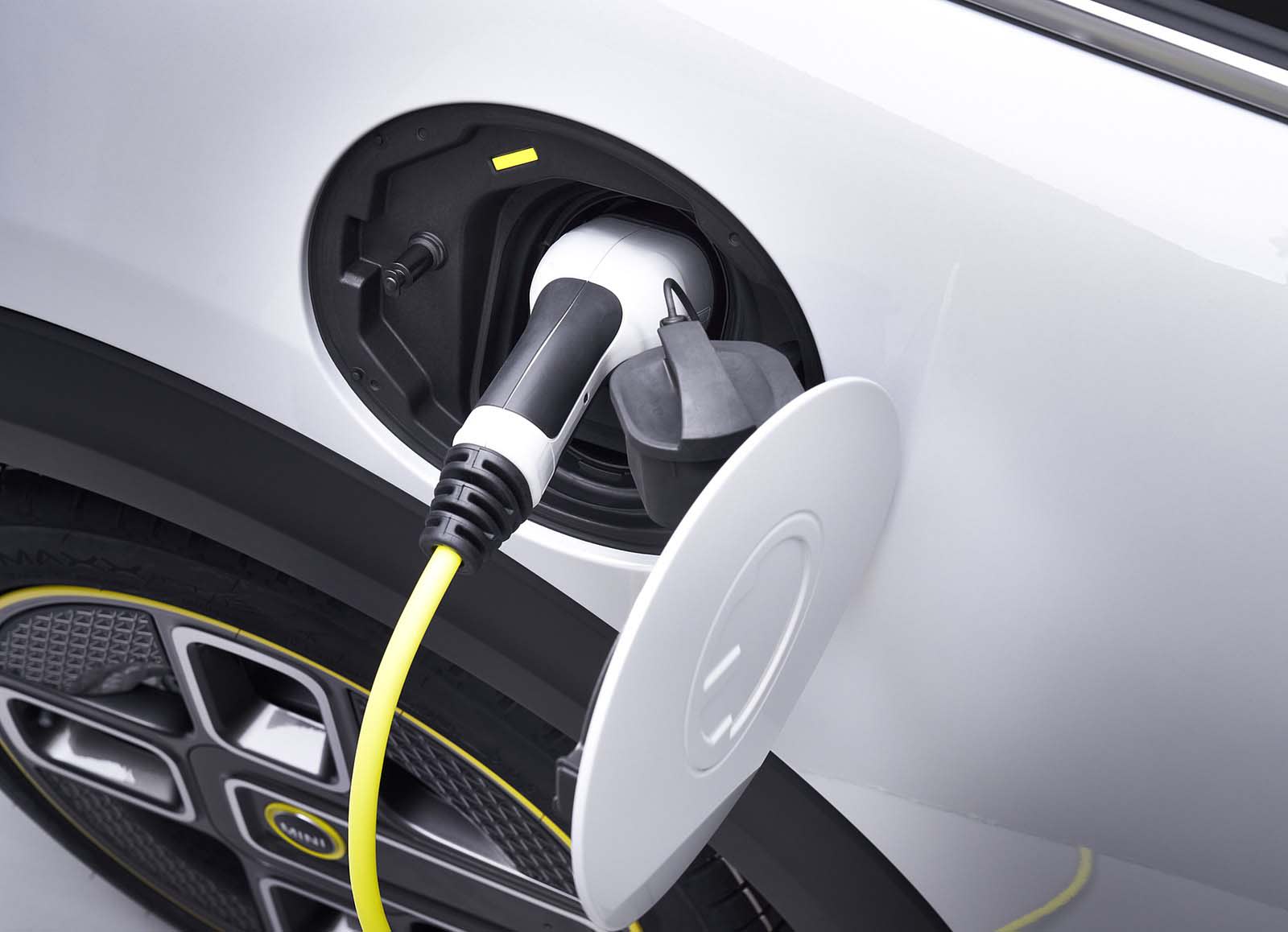
It’s worth working out exactly how you’ll use the car and the logistics of charging before deciding whether or not that could work for you.
To help navigate the maze of public charging points, MINI has partnered with a range of electric charging firms to allow you to access some 11,000 charging sites through a single MINI app, rather than having myriad different accounts.
You will find that the MINI Electric is costlier per month than a petrol-powered version, but that’s offset by the day-to-day costs. Compare it to rivals and, trim depending, you’ll find it’s cheaper per month than a Honda E or BMW i3 and costlier than a Volkswagen e-Golf and Vauxhall Corsa-E. But do any of those rivals have the same brand appeal as a MINI?
When it comes to day-to-day costs, electricity is of course far cheaper than petrol, especially if you’re on a home tariff where you can charge overnight for less. This will be the cheapest way of keeping your MINI Electric topped up, unless you’re lucky enough to have free access to electricity at work. Using public chargers will be great on long journeys, but considerably more expensive. But still cheaper than petrol. u don’t need a subscription, you just get a monthly invoice for any electricity you use.
The MINI Electric sits in insurance group 22 of 50 for the Level 1 and Level 2 trims, and group 23 for the Level 3 trim. This is actually lower than the petrol-powered Cooper S, so the Electric should be cheaper to insure.
As there are no CO2 emissions from any model of Mini Electric, you won’t pay any Benefit in Kind company car tax, at least for 2020/2021. That will change though, to 1% in 2021/22 and 2% the year after that. Still, that’s very affordable for those looking at a MINI Electric as a company car.
The MINI interior has stayed largely the same over the best part of 20 years, with a quirky retro look that reflects the original 60s classic. Some might find it a bit twee or kitsch, but that’s half the appeal of the MINI anyway. The Electric version makes sure it’s still thoroughly modern, with a digital display behind the steering wheel in place of traditional analogue dials.
All the switches and buttons look and feel great, and very different to almost every other car on the market. The materials used are solid and premium-feeling too, and there’s plenty of adjustability in the front seats and steering wheel.
![]()
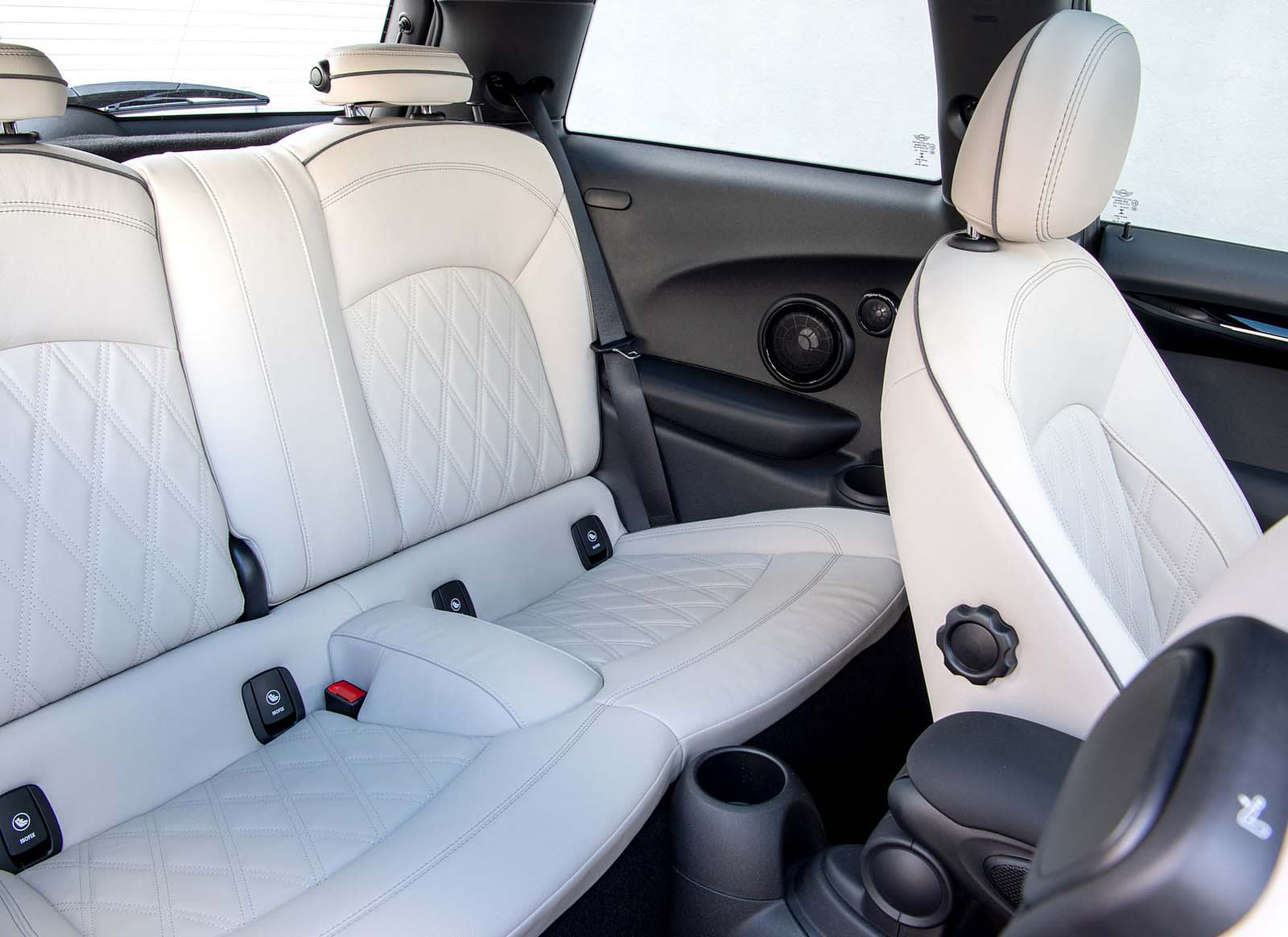
If you had to criticise, you’d say that some rivals have larger screens, which make it easier to show more information on them, but it’s not really a big issue. You control the infotainment system using a dial between the front seats, which we reckon is easier on the move than trying to stab at the touchscreen.
Infotainment duties are carried out by a 5.5-inch screen behind the steering wheel and an 8.8-inch touchscreen in the centre of the dashboardl. On these you’ll find all sorts of driving information, including how much battery you’ve got left, and entertainment details. AppleCarPlay is included, but there’s no Android Auto.
Still, you will have DAB radio and Bluetooth, as well as sat-nav. The system can also be controlled by a dial between the front seats, which means no need to flail at a touchscreen when driving.
![]()
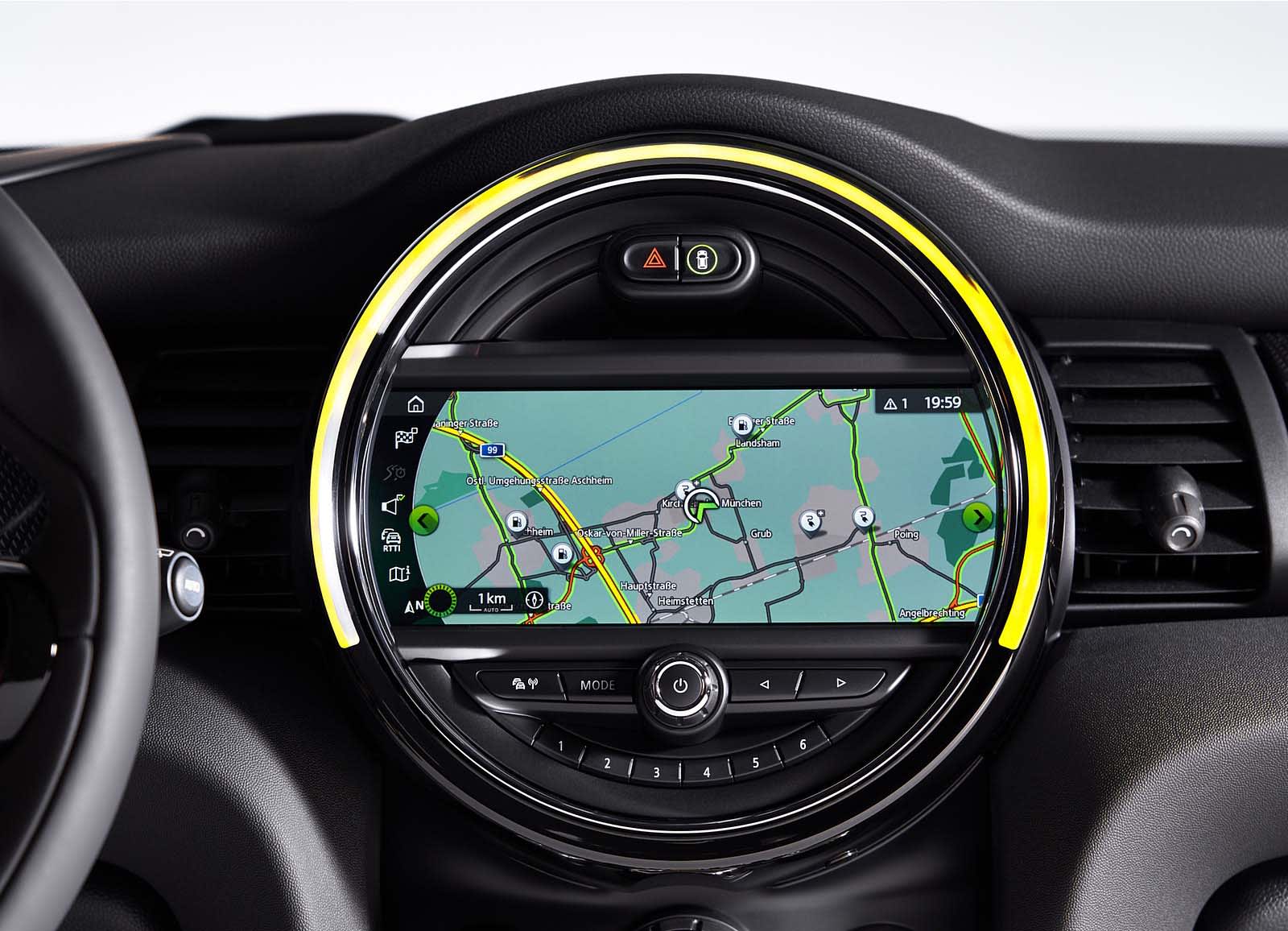
Very often, electric versions of existing cars have less space inside them, thanks to all the electric tech needed to make it go. That’s true of the MINI Electric too. You can only get it in a three-door version, which makes access to the back seats more difficult, and because the rear seats are higher than in the petrol car, there’s less headroom. This is particularly true in the Level 3 car, which comes with a panoramic sunroof that eats further into head space.
If you need to carry adults in the back on a regular basis, the MINI Electric might not be the best choice, but you should be able to get children in without too many problems.
Boot space is good, the same as in the regular MINI Hatch, although some rivals do boast more room still. There are cubby holes around the cabin to store things in, although they’re on the small side, and two cup holders and a storage tray between the front seats.
The MINI Electric hasn’t yet been tested by safety organisation Euro NCAP.
The MINI Hatch, upon which the Electric is based, scored four out of five stars when it was tested back in 2014. The latest version has plenty of modern safety technology, although not in the Level 1 model. Level 2 gives you automatic emergency braking and traffic sign information.
Isofix child seat mounting points are fitted in the outer rear seats and front passenger seat, and all models are fitted with six airbags.
![]()
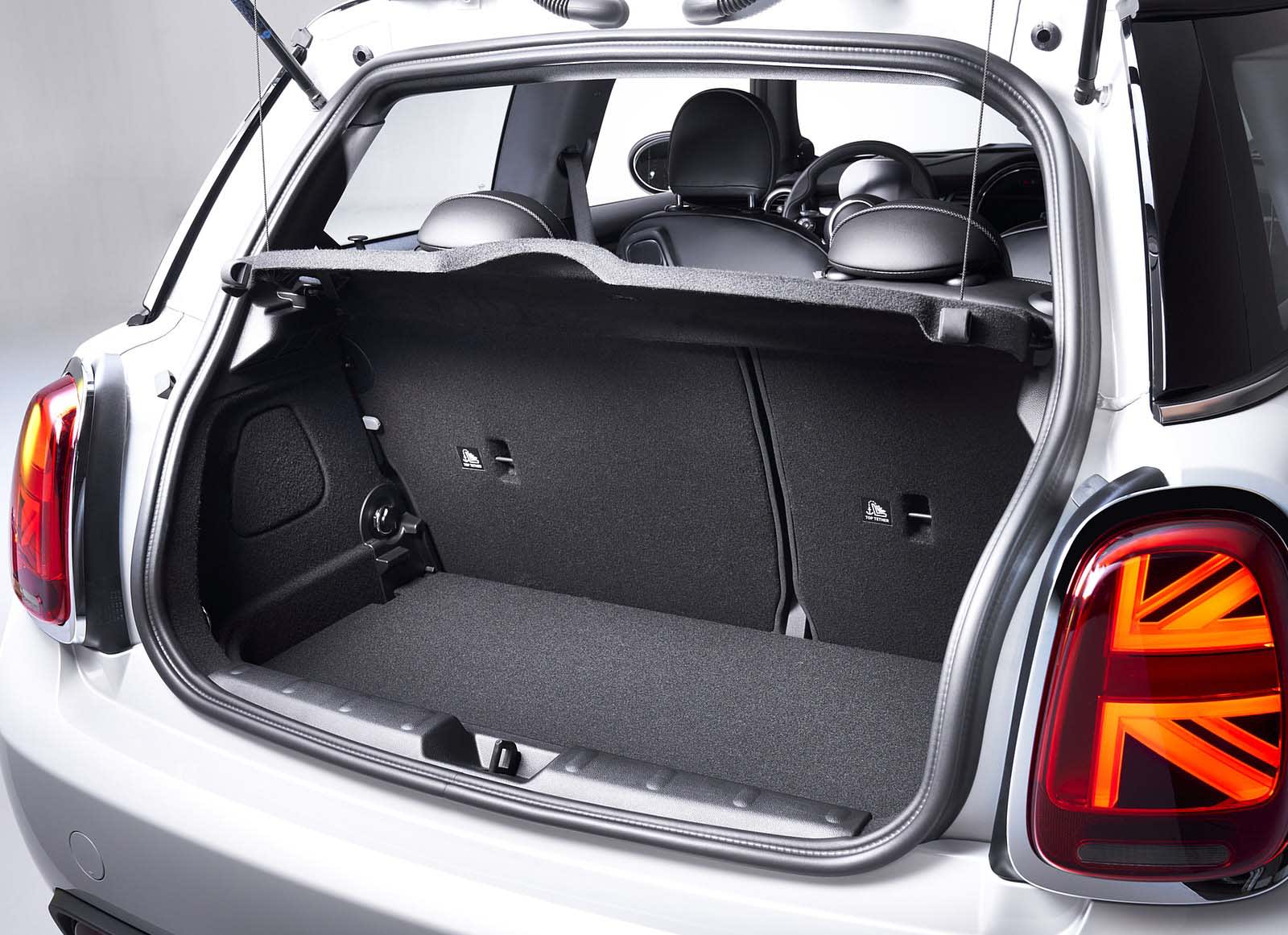
MINI has kept it pretty straightforward to choose which Electric you want, with three base trim levels and a special edition model for 2021.
Level 1 comes with a choice of 16-inch or 17-inch alloy wheels, sat-nav and LED lights as well as dual-zone air-conditioning and cruise control, but misses out on some safety kit.
Level 2 gives you extra paint colour options, more wheel choices and some fancy interior lighting, as well as a rear parking camera and heated front seats.
Level 3 gives you leather seats, an upgraded Harmon Kardon sound system and adaptive matrix LED headlights, which let you keep high beam on without dazzling oncoming traffic, You also get a panoramic sunroof, as well as front parking sensors and more choices of wheels and paint colours. But aside from wheels and paint, there aren’t any other options to worry about.
The new-for-2021 MINI Electric Collection is what MINI calls ‘the designer’s choice’. It comes with Island Blue metallic paint and a special multitone roof, featuring paint that fades from blue to black. Each model has a different roof. It also rides on 17-inch alloys and has black mirror caps, with a black and grey cloth and leatherette interior.
Electric car customers may well cast a wider net than others if they’re looking at vehicles based on the way they’re powered rather than, say, the body style. When it comes to other small electric hatchbacks, the obvious rival to the Mini Electric is the Honda E, which is arguably even more quirky and characterful, but is more expensive and, like the Mini, doesn’t have the biggest driving range.
It’s definitely one to check out if you want to stand out though.
Other small electric hatchbacks include the Nissan Leaf and Renault Zoe, which offer bigger driving ranges but not quite as much personality or driving fun, as well as the Peugeot e-208 – which is a solid all-rounder – and the Volkswagen e-Up, which is a cracking little car but very small.
If you need more space, it’s worth considering MG’s ZS EV, which doesn’t have the charm of the Mini Electric, but is a lot of car for the money. If you don’t want an SUV, MG’s 5 EV estate is also worth looking at for similar reasons.
![]()
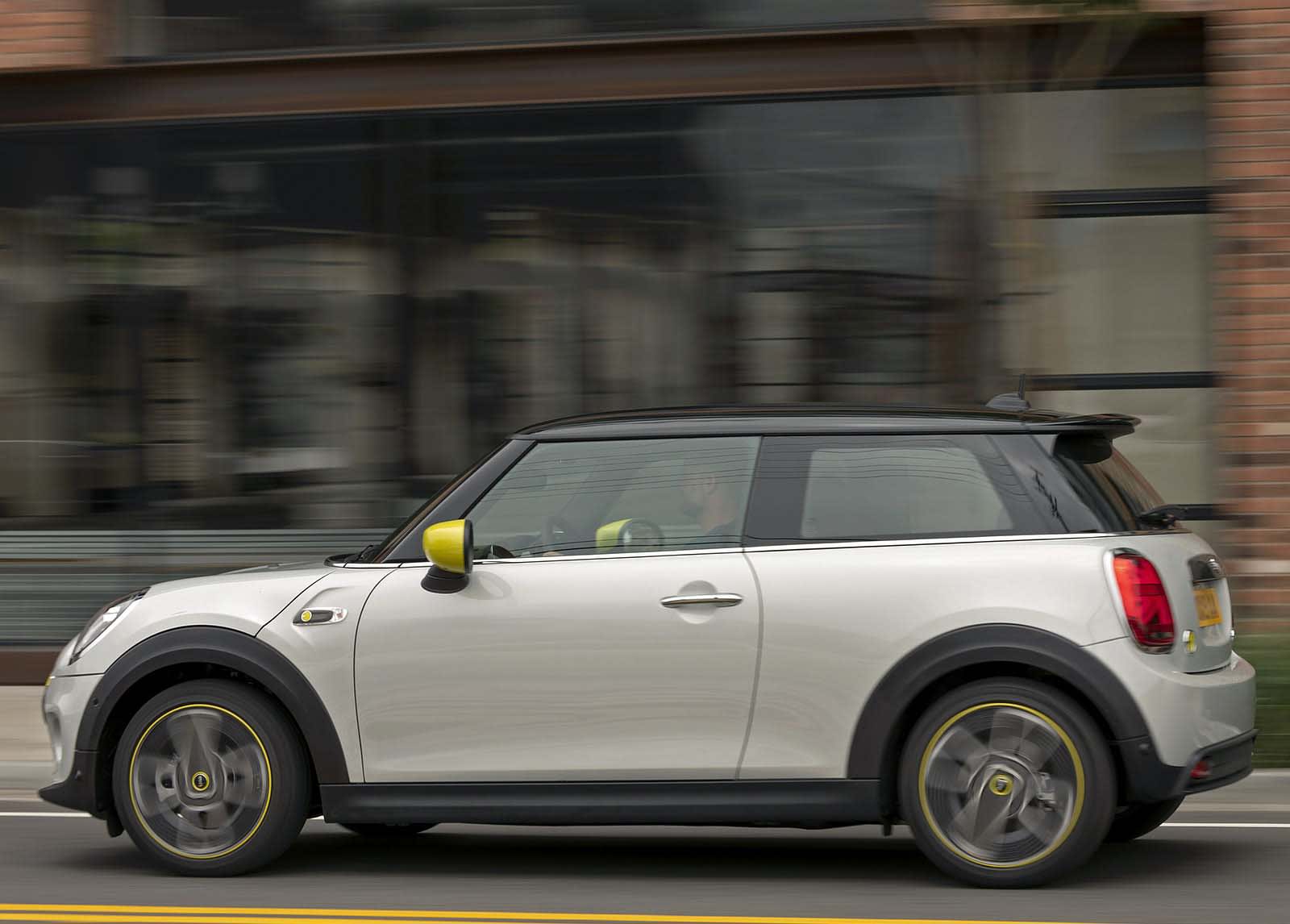
MINI has succeeded in transferring the charm and driving fun of its petrol cars into a zero-emission vehicle, and the MINI Electric should win plenty of fans. It’s capable of putting a smile on your face in the same as a Cooper S would, and for many people the relatively small driving range won’t actually be too much of an issue.
If you want an electric car with plenty of zip, plenty of character and a very smart interior, then this could be the car for you.
Where to next?
View latest Mini Electric car leasing deals - from just £397.80 per month inc VAT**
Looking for a great leasing deal? Check out our incredible range of car lease deals
New electric hatchback? Read our latest Car Reviews and find the right model for you
Want to know more about leasing? Take a look at our comprehensive Leasing Guides
Interested in everything motoring? Why not catch up on all the latest Car Leasing News.
*Score based on Select’s unique meta score analysis, taking into account the UK’s top five leading independent car website reviews of the Mini Electric Hatchback
**Correct as of 19/04/2023. Based on 9 months initial payment, 5,000 miles over a 48 month lease. Initial payment equivalent to 9 monthly payments or £3,580.20 Ts and Cs apply. Credit is subject to status.
{
"@context": "http://schema.org",
"@type": "VideoObject",
"name": "Mini Electric Review - Select Car Leasing",
"description": "Considering an electric car as the way forward, but stuck on the fence? Hold tight while we fetch the proverbial step ladder.
This week we’re reviewing the Mini Electric. We’re putting it through its paces in real-life situations and giving you a whistle-stop tour of the British classic that’s been revamped for an electric future ⚡️
Fancy leasing one today? Head over to our website 👉🏼 https://bit.ly/3E7wJMB
-
Next up, we tackle the BMW iX 😎 So stay tuned.
#carreview #carreviews #electriccars #electricvehicles #selectcarleasing #leasing #mini #minielectric #generatemedia #thesustainabledad
",
"thumbnailUrl": "https://i.ytimg.com/vi/2tps1KWoUnU/hqdefault.jpg",
"uploadDate": "2022-04-20T03:17:16-07:00",
"duration": "PT3M16S",
"embedUrl": "https://www.youtube.com/embed/2tps1KWoUnU",
"contentUrl": "https://www.youtube.com/watch?v=2tps1KWoUnU",
"interactionCount": "114344"
}
.jpg)
.jpg)







.jpg)


















